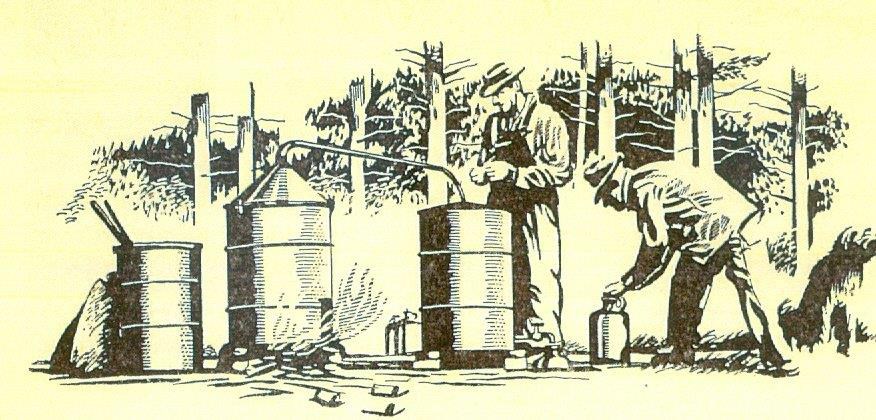In the book Saskatchewan A History of a Province by J.F.C. Wright Copyright 1955, there are many great illustrations as can be seen from the one presented here. Photos of brewing activities are not very plentiful. We have pretty well given up on finding a photo of Harry Bronfman in Yorkton, never mind him standing at the door of his Canada Pure Drug Company, or at a doorway to a tunnel! If you got caught by the police, no one wanted them to have confiscated a photo of their brewing or their cache. So, we are happy to have a good illustration of an operation taking place somewhere in a woodland grove. This could have been taking place in the Yorkton region. According to Wright, illegal manufacturing of liquor increased in the Yorkton area and elsewhere in the province even after the government abolished the border warehouses. A 1923 R.C.M.P. report estimated that there were “more illicit stills in Saskatchewan, with a population of 760,000 than there was in all of Canada with a population of over 8,000,000.” It is also suggested that a percentage of farmers of mid-European background had in the country of their origin, prior experience in the comparatively simple process of distilling alcohol from fermented grain and potatoes. Also, pre-Canadian conditioning had not been conducive to respect for inland revenue enforcement officers. Grain converted to liquor brought a greatly enhanced price to the grower. Courts could hardly keep up with the charges of brewing, selling of booze and even for manufacturing of stills.
Contact Terri Lefebvre Prince,
Heritage Researcher,
City of Yorkton Archives,
Box 400, 37 Third Avenue North
Yorkton, Sask. S3N 2W3
306-786-1722
heritage@yorkton.ca



